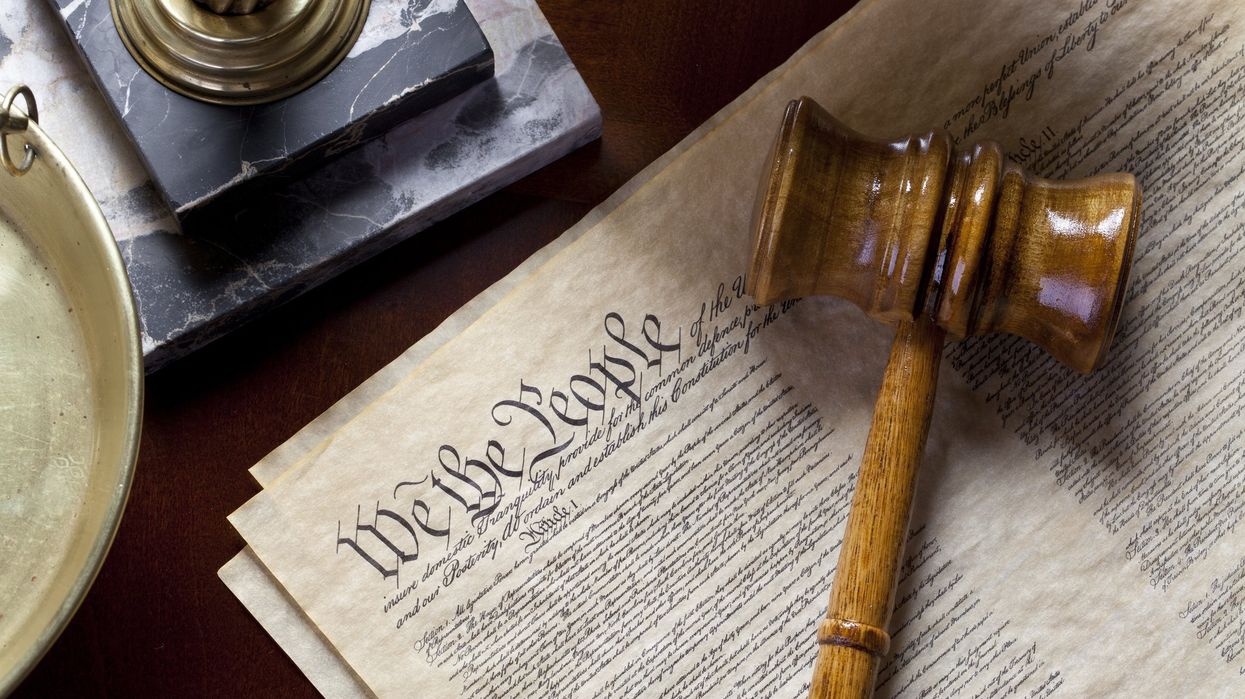One action or law that violates the letter or established interpretation of the Constitution may simply be unconstitutional, but a series of brazen actions, unlicensed assertions of power that trespass on constitutional text and legal precedent, uncloaks anti-constitutionalism. Multiple examples of anti-constitutional assertions of power reveal a threat to U.S. democracy and point to the deliberate stirring of political chaos to advance power grabbing. We should anticipate that calling for a Constitutional Convention may well be another such tactic and we must do what’s possible to block it.
Asserting by executive order, the nullification of the right to citizenship for those born in the U.S.—despite the Constitution’s 14th Amendment —is but one example. Claiming that there are “ methods ” to obtain a third presidential term when the 22nd Amendment prohibits it is another example. Supplanting via executive order the rights of states and Congress to regulate elections under the Constitution’s Elections Clause is a further example. Claiming the power to dismantle federal agencies created by law and currently funded by Congress flouts the Constitution’s requirement under Article 2 that the President, and by extension the executive branch, must “take care that the laws be faithfully executed”. Ignoring immigrants’ due process rights and penalizing law firms and universities are among the other instances where that good faith requirement is being disregarded.
Those actions are part of a “flood the zone” approach to overwhelming opposition and any challenge to power grabs via traditional checks and balances. The resulting political chaos creates cover for the attack on constitutional order. When anti-constitutional measures are blocked by the courts, it is labeled as an improper constraint on “inherent” executive powers and proof that the system is broken. The implication is that the constitutional order is the problem.
Clamoring to change the Constitution, but how? By amendment or convention?
Representative Andy Ogles (R-Tennessee) is proposing a constitutional amendment that would allow President Trump to seek a third term. Abolishing birthright citizenship could also be addressed by a constitutional amendment as could other matters. According to Article 5 of the Constitution, each of them would require two-thirds approval by both houses of Congress and ratification by three-fourths of the states. The current political compositions of Congress and state legislatures make passage of such amendments highly unlikely. However, Article 5 provides a never previously used means that could almost certainly heighten political chaos.
Article 5 requires Congress to convene a constitutional convention for “proposing amendments” upon the application of two-thirds of the states, 34 states today. That bypasses a two-thirds congressional vote to open Pandora’s constitutional box.
The article is silent about what constitutes an application or how long one remains valid. It also does not state that applications must be about a particular subject or whether applications about different subjects could be amalgamated to meet the 34-state requirement. Plus, it provides no rules about a constitutional convention’s size, scope, or how it is to be administered. With Republicans controlling both houses of Congress, while the November 2024 elections provided Republicans with control of both legislative houses in 23 states and Democrats with control of both houses in 15, it is possible that the MAGA movement would be able to control a constitutional convention should one take place any time soon.
If a convention is convened, any and all of the present articles and amendments of the Constitution could be targeted for change or even a complete rewrite could be offered as an amendment. Revoking the presidential two-term limit, abolishing birthright citizenship, limiting judicial powers, eliminating legal abortion, defining gender as sex assigned at birth, and a litany of other topics could be combined to make the call for a constitutional convention a political bludgeon against checks and balances of presidential power as well as against “wokeness”. And, those rallying cries could be joined with more traditional calls for a convention to address balanced budgets and other matters.
Is constitutional amending or creating chaos the point?
If a convention were to take place, Article 5 requires that any proposed constitutional amendments resulting from it would need to be ratified by three-quarters of the states. While it is unlikely that the threshold could be met, at least in the near future, the political chaos caused by a convention would likely be dramatic. And, Congress could specify in calling for the convention that ratification be by state conventions, rather than by state legislatures. Those conventions could be closed affairs or otherwise preclude democratic debate. Some states would probably refuse to convene them but heightened polarization and political fallout would be likely consequences, nationally and in states that hold conventions.
Extreme elements would surely claim the lack of success shows that the Constitution and its processes are the problem. That could fuel calls to suspend the Constitution, adding to chaotic politics as upcoming elections approach. In that context, if courts resist anti-constitutional actions, if large-scale protests are pushed into violent confrontations, or if other pretexts develop, the potential for constitutional suspension could significantly increase. Other countries have gone into such constitutional limbos to negative ends.
Put bluntly, though there are sound reasons to debate constitutional weaknesses and a democratic path to amendments, fomenting political chaos can create an opportunity for autocracy. The current drive for a convention seems to head in that direction.
What about the 34-state application requirement for convening a convention?
Some argue that all requests by states—no matter on what subject and no matter how old—should be added together unless they are rescinded. Citing data presented in the Article 5 Library, an unofficial website, they claim that the 34-state threshold is already surpassed. And, there is an effort to initiate a lawsuit on that basis to force Congress to call a convention. Representative Jodey Arrington (R-Texas), who believes enough applications are filed, has introduced legislation requiring Congress to call a constitutional convention. He also introduced a bill charging the National Archives with developing an official tally of state convention applications, which could settle the debate about meeting the 34-state requirement.
Common Cause states that six more applications are needed to trigger a convention, noting that there are four major campaigns underway to meet the threshold. Former Senator Rick Santorum (R-Pennsylvania) is among those actively lobbying states to pass convention applications, including advising the successful effort in North Carolina last year. The Convention of States Action website notes that there are 19 states with active convention applications and 21 states actively considering such resolutions, including eight where one legislative chamber has passed one. That demonstrates the nationwide political tug-of-war over the 34-state requirement.
As many as 11 states have rescinded their earlier convention applications since 2016. New York is the most recent example, and a bill is presently moving forward in California’s legislature to void that state’s seven applications approved over time. (The seven include a 1911 application concerning the direct election of U.S. Senators, though ratification of the 17th Amendment rendered it moot.) The California effort is backed by action groups, including the state's chapters of Common Cause, League of Women Voters, and Indivisible. The American Constitution Society ( ACS) and its immediate past president, former Senator Russell Feingold (D-Wisconsin), who co-authored a book on the subject, have also raised an alarm about the dangers of a constitutional convention in present times.
Can a runaway constitutional convention be prevented?
Every citizen has a say in whether a constitutional convention is called and there are significant ways to use that voice.
It is important to determine the status of the application issue in particular state legislatures and to weigh in with representatives, both state and national. That can be done on an individual basis and/or as part of organized efforts. Common Cause recently launched a campaign enlisting citizens to oppose convening a constitutional convention. It is also facilitating a coalition of almost 250 national, state, and local organizations opposing a convention, the Defend Our Constitution project, which provides resource materials and calls to action.
California’s example shows that citizen groups like Indivisible and the League of Women Voters can join efforts to rescind prior convention applications or oppose the passage of new ones. The proposed California bill’s text ( SJR1) is straightforward and could serve as a template. The issue is also fitting for “Hands Off!” efforts. Contacting state and local chapters of these and other organizations—including unions and religious and civil rights groups—and urging them to take up the issue is crucial; along with using personal and social media networks and sending op-ed pieces and letters to traditional and online news sources.
Marshaling citizen power to confront anti-constitutionalism wrapped in the guise of “amending” the Constitution is essential to putting an end to spreading political chaos and authoritarian power grabbing. Otherwise, “flooding the field” could drown American democracy—though much more is needed than just defending the Constitution. We all have the responsibility to defend and promote the promise of democracy.
Pat Merloe provides strategic advice to groups focused on democracy and trustworthy elections in the U.S. and internationally.



















